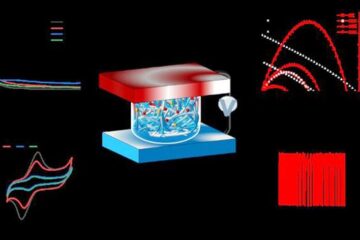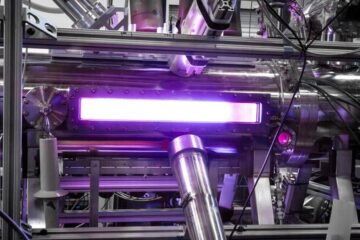Only three percent of potential bacterial drug sources known

Bioinformatic comparison of a large number of diverse bacterial genomes drives discovery of new gene clusters with potential antibiotic activity.
(c) Leon Kokkoliadis, Eberhard Karls Universität Tübingen
The emergence of antibiotic-resistant pathogens and the increasing difficulty in developing new drugs has contributed to global challenges in combating infectious diseases. An extensive bioinformatics survey of around 170,000 bacterial genomes indicates that only three percent of the genomic potential for microbial natural products—chemically diverse bacterial metabolites that form the basis of antibiotic drugs—have been discovered so far. Co-led by Prof Nadine Ziemert of the German Center for Infection Research (DZIF), the survey identified several bacterial genera as producers of highly diverse natural products that could help to overcome the bottleneck in drug development.
Bacterial producers of natural products as sources of drugs such as antibiotics have been studied for decades. However, the rate of new drug discovery has stagnated in recent years. There is uncertainty on how much chemical diversity exists in nature and how many new compounds can still be discovered. Additionally, assumptions that a large portion of natural product-producers and respective biosynthetic pathways have been discovered already have not been investigated.
To understand the true potential of useful biosynthetic pathways and natural products in the bacterial world, an international team of researchers from Germany, the Netherlands and the United States surveyed a large amount of genomic data—around 170,000 bacterial genomes and several thousands of so-called Metagenome Assembled Genomes representing individual microbial taxa from diverse environments. Using a genome mining strategy, the team identified so-called Biosynthetic Gene Clusters (BGCs)—clusters of genes in bacterial genomes that jointly encode the biosynthesis pathways of natural products. Grouping the BGCs into gene cluster families according to similarity, the researchers developed tools that allow the study of the biosynthetic diversity represented in the bacterial genome database.
“Our bioinformatics genome mining approach reveals that only three percent or even less of the genomic potential for the production of natural products has been discovered so far,” says Prof Nadine Ziemert, who is also with the Cluster of Excellence “Controlling Microbes to Fight Infections” (CMFI) at the University of Tübingen.
Based on the mined data, the researchers identified bacterial taxa that showed high biosynthetic potential, among them multiple unexplored taxonomic groups. The data also revealed undiscovered biosynthetic diversity in otherwise well-known bacterial genera, many of which are the main producers of antibiotics. These promising targets for future research could help drive the development of new effective antibiotics and other drugs.
Wissenschaftliche Ansprechpartner:
nadine.ziemert[at]uni-tuebingen.de
Originalpublikation:
Gavriilidou, A., Kautsar, S.A., Zaburannyi, N. et al. Compendium of specialized metabolite biosynthetic diversity encoded in bacterial genomes. Nat Microbiol 7, 726–735 (2022). https://doi.org/10.1038/s41564-022-01110-2
Weitere Informationen:
Watch a video highlighting the research:
Media Contact
All latest news from the category: Life Sciences and Chemistry
Articles and reports from the Life Sciences and chemistry area deal with applied and basic research into modern biology, chemistry and human medicine.
Valuable information can be found on a range of life sciences fields including bacteriology, biochemistry, bionics, bioinformatics, biophysics, biotechnology, genetics, geobotany, human biology, marine biology, microbiology, molecular biology, cellular biology, zoology, bioinorganic chemistry, microchemistry and environmental chemistry.
Newest articles

Superradiant atoms could push the boundaries of how precisely time can be measured
Superradiant atoms can help us measure time more precisely than ever. In a new study, researchers from the University of Copenhagen present a new method for measuring the time interval,…

Ion thermoelectric conversion devices for near room temperature
The electrode sheet of the thermoelectric device consists of ionic hydrogel, which is sandwiched between the electrodes to form, and the Prussian blue on the electrode undergoes a redox reaction…

Zap Energy achieves 37-million-degree temperatures in a compact device
New publication reports record electron temperatures for a small-scale, sheared-flow-stabilized Z-pinch fusion device. In the nine decades since humans first produced fusion reactions, only a few fusion technologies have demonstrated…





















